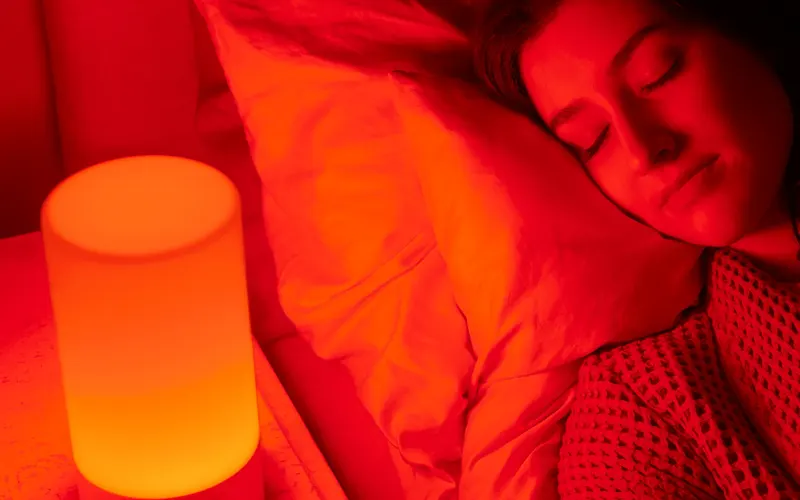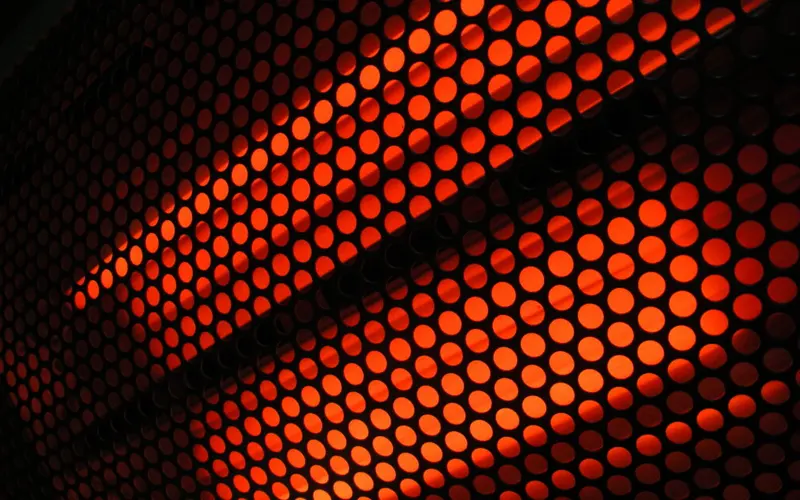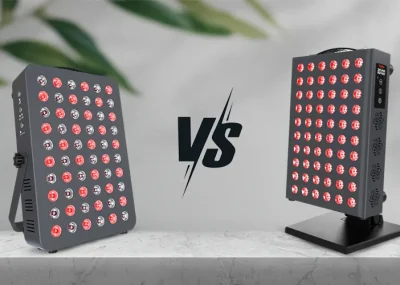Overview
For many, the change of seasons brings a unique anticipation—not only for the changing weather but also for battling colds and flu. Red light therapy is a cutting-edge treatment that has been discovered actually to boost the immune system. In this article, you are going to learn how red light therapy just might be your secret weapon during flu season in a very real way: how to maintain a high-functioning immune system so that you can battle through without a winter bog-down of illness dragging you down.
What’s Red Light Therapy?
Red light therapy is also known by the name of photobiomodulation or low-level light therapy. It is an easily available and non-invasive treatment technique to activate the body towards recovery and overall health. The therapy works with the two following light types and their corresponding wavelengths:
- Red light: Part of the visible spectrum, having wavelengths between 630-700 nanometers (nm).
- Near-infrared light: Enters the category of invisible to the naked eye, where their range is measured from 700 to 850 nm.
- Improved Circulation: Red light therapy promotes the production of nitric oxide, a molecule that aids the widening of blood vessels. This improved circulation boosts the delivery of oxygen and nutrients to cells while facilitating the removal of waste products. Better circulation allows immune cells to travel easily throughout the human body to fight infections.
- Support for the Lymphatic System: The lymphatic system is vital for immune functions because it filters out bad substances and produces immune cells. Red light therapy improves lymphatic drainage, possibly making this system more efficient at waste elimination and supporting immune responses.
- Stem Cell Activation: Studies confirm that red light can activate and revitalize stem cells. These versatile cells can renew or multiply into many kinds of cells, including immune ones, enhancing the body’s defense against infections.
- Production of Melatonin: The production of melatonin—essential for the regulation of wake-sleep cycles—is significantly increased by exposure to red light, especially at night. Quality sleep is closely related to better immunity.
- Inflammation Reduction: Chronic inflammation often subdues immune function. Red light has been proven to be very anti-inflammatory, which is one of the ways it can balance and enhance immune function.
- Modulation of Cytokines: Cytokines are signaling molecules that coordinate immune responses. Red light therapy can optimize immune responses to infectious pathogens through the modulation of cytokines.
- Sore Throat and Cough: Pass the red light over your neck, preferably focusing on the carotid artery, for 10-20 minutes. This will help decrease inflammation and its associated pain in the throat, with a possible stimulation of local immune reactions.
- Nasal Congestion: Pass the light over your face, mainly localized over the nose, for 10-15 minutes. In this way, the infection in the nose is reduced, thus improving breathing, and the virus clearance might be faster.
- Headaches: Apply the light to your forehead for 10-20 minutes. It combats tension and may eliminate some inflammation that initiates sinus-related headaches.
- Muscle and Joint Pains: Apply the device to the areas of pain for 10-20 minutes. Red light therapy pretty much dissipates many of the body aches characteristic of flu because it has anti-inflammatory effects.
- General Support of the Immune System: Using red light therapy every day can promote the immune system even without targeting any symptoms in particular. During the flu season, it is recommended to have a full-body treatment every day for 10-20 minutes.
- Non-invasive: It uses none of the incisions or injections, which makes it very easy to get.
- Chemical-free: It does not introduce any drugs or substances into the body.
- Non-thermal: Since no heat is produced on the outside, most risks of burn or thermal injuries are eliminated.
- Free from UV radiation: Unlike many light therapies, red light does not include any ultraviolet rays that can be harmful to the body.
- Limit average daily treatment time to no more than 20 minutes per area.
- Wear eye protection, especially with higher-power systems.
- Talk to a healthcare provider before starting red light therapy if you have any pre-existing medical conditions or take photosensitizing medications.
- It’s generally safe for all skin types, but people with sensitive skin should start with shorter sessions and increase the duration gradually.
- High-quality materials ensure durability and effectiveness
- User-friendly design suitable for all ages
- Oftentimes, more available at a lower cost
- Great for beginners
- Limited treatment area
- May require longer treatment times for full-body benefits
- Can treat the entire face simultaneously
- The user’s hands are free to do other things
- Often combine both red and near-infrared light
- Use on the face only
- May be small enough to feel claustrophobic to some users
- Able to treat larger areas at one time
- Often more powerful than smaller devices
- Some modular models can allow for expansion over time
- Not portable like other handheld devices
- Most of the larger, full-body panels are quite costly
- Require considerably more space for storage and use
- Can be wrapped around joints or even just draped across the body
- Usually more comfortable in longer treatments
- Ideal for more focused treatments on explicitly targeted body areas like the chest, back areas
- May not cover as generally large portions like the panels
- Generally less potent than the rigid panels
- Best for treatments covering the whole body at once
- Often the strongest option available
- Offer the greatest potential in terms of comprehensive therapy and immune enhancement
- Quite costly
- Space-consuming
- Overkill for spot treatments
- Highly portable
- Easy to use in specific areas
- Often available at a lower cost
- Great for beginners
- Limited treatment area
- May require longer treatment times for full-body benefits
- Check for the wavelength: Most devices emit red light at 660nm and near-infrared light at around 850nm for full benefits.
- Power: The most powerful machines have the potential for more efficient treatments but should be approached with caution.
- Treatment area: Larger panels allow for treating bigger areas at once, ideal for whole-body immune support.
- Portability: Handheld devices are ideal for portability and ease of use.
- Safety features: Look for automatic timers and built-in eye protection.
- FDA Clearance: While not strictly necessary, FDA-cleared devices undergo higher scrutiny for safety and efficacy.
These waves can get to the skin at different depths, where they incite desirable cellular responses. Shorter wavelengths of light are seen in red light; hence red light is used in treatments for rejuvenating the skin and in wound healing. Deeper tissues correspond to longer wavelength light, which, therefore, will be useful in treating issues like chronic inflammation and joint pain.
The science behind red light therapy has to do with its interaction with the mitochondria, the powerhouses in your cells. Irradiating the mitochondria with this wavelength of light encourages them to make more ATP, the basic energy unit made by all living organisms. Increased cellular energy has been theorized to positively influence cell performance, accelerate repair, increase regeneration, and ultimately improve health in general.
How Red Light Therapy Strengthens Your Immune Defense
In relation to immune function, red light therapy can do several things that help reinforce your body’s natural defence in different respects. The energy boost will allow immune system cells to work better, which will facilitate their functioning in the identification and neutralization of pathogens. Red light treatment would stimulate and, therefore, increase the activity of mitochondria to enhance ATP production.
 How Red Light Therapy Strengthens Your Immune Defense
How Red Light Therapy Strengthens Your Immune DefenseCombating Cold and Flu with Red Light Therapy
Common symptoms of colds and flu are targeted by red light therapy.
It is worth mentioning that consistency comes first in line when aiming for the best available results. The majority of users notice and feel the improvements within the first few sessions, but using it regularly during the whole flu season is the best protection and relief therapy.
Is Red Light Therapy Safe?
The high safety profile is one of the critical characteristics that make red light therapy so attractive. It is
Numerous safety studies on red light therapy have been conducted, with no/mostly minor side effects when treatment is appropriately administered. Then again, like any other treatment, guidelines should be adhered to:
What LED Light Products Can Be Used to Combat Cold and Flu?
Let’s delve into the details of different apparatuses used for red-light therapy to treat cold and flu. Every type of the following has its own benefits, and the choice for one usually depends on personal needs, budget, and lifestyle. Let’s take a closer look:
Hand Held Units
These work well for treating smaller areas, such as the throat, sinuses, or chest. They are ideal for spot treatments, and you can easily carry them in your bag or suitcase.
Pros
Cons
LED Face Masks
Shaped for a physical mask, these devices are applied over the face, making them particularly useful for sinus congestion, headaches, and other face-centric issues.
Pros
Cons
Light Panels
Panels are somewhat larger, flat devices that have the capacity to treat larger areas of the body at one go. They come in different sizes, ranging from very small panels, which are convenient for desktop use, up to full-body large ones. The best red light therapy for body use typically involves choosing a panel that fits your specific needs, whether it’s for targeted treatment or comprehensive full-body coverage.
Pros
Cons
Flexible LED Pads
These pads are designed in a way that they can accommodate themselves in accordance with various parts of the human body. Therefore, these pads are very flexible in their usability for DPT of any type.
Pros
Cons
Full-Size Light Beds or Full-Body Systems
This is the most holistic solution and is aimed at treating the whole body all at once. Most often these have been seen in professional settings, but you can find some for home use.
Pros
Cons
Nasal Light Therapy Devices
These are special types of devices that emit light into a person’s nasal area directly.
Pros
Cons
What to look for while purchasing a device to treat colds and flu
Among the most popular include LED based face masks designed for work with sinus problems, hand-held devices for spot treatment, and large panels for the whole body. The choice mainly depends on your specific needs and budget.
Conclusion
As we move through yet another flu season, red light therapy becomes one of those many things added to your toolkit. By manipulating waves courtesy of light with specific wavelengths, the immune system is potentiated, symptoms are alleviated, and wellness is supported. This is not in lieu of traditional precautionary measures or the consulting of a healthcare provider, but it is a safe and natural complement to a winter health regimen.
Remember, health is bigger than the sum of its parts. Supplement other immune-strengthening habits, such as regular exercise, a balanced diet rich in fruits and vegetables, adequate sleep, and effective stress-releasing techniques, with red light therapy. Give your body the complete systemic support necessary for a flu season that will promote whatever it has in store for you.
As further research continues to develop in this area, it is possible that we will identify many more benefits of red light therapy for the immune system. For now, red light represents a novel and exciting noninvasive option for those who would like to improve the ability of their body’s natural defence system to fend off illness.













